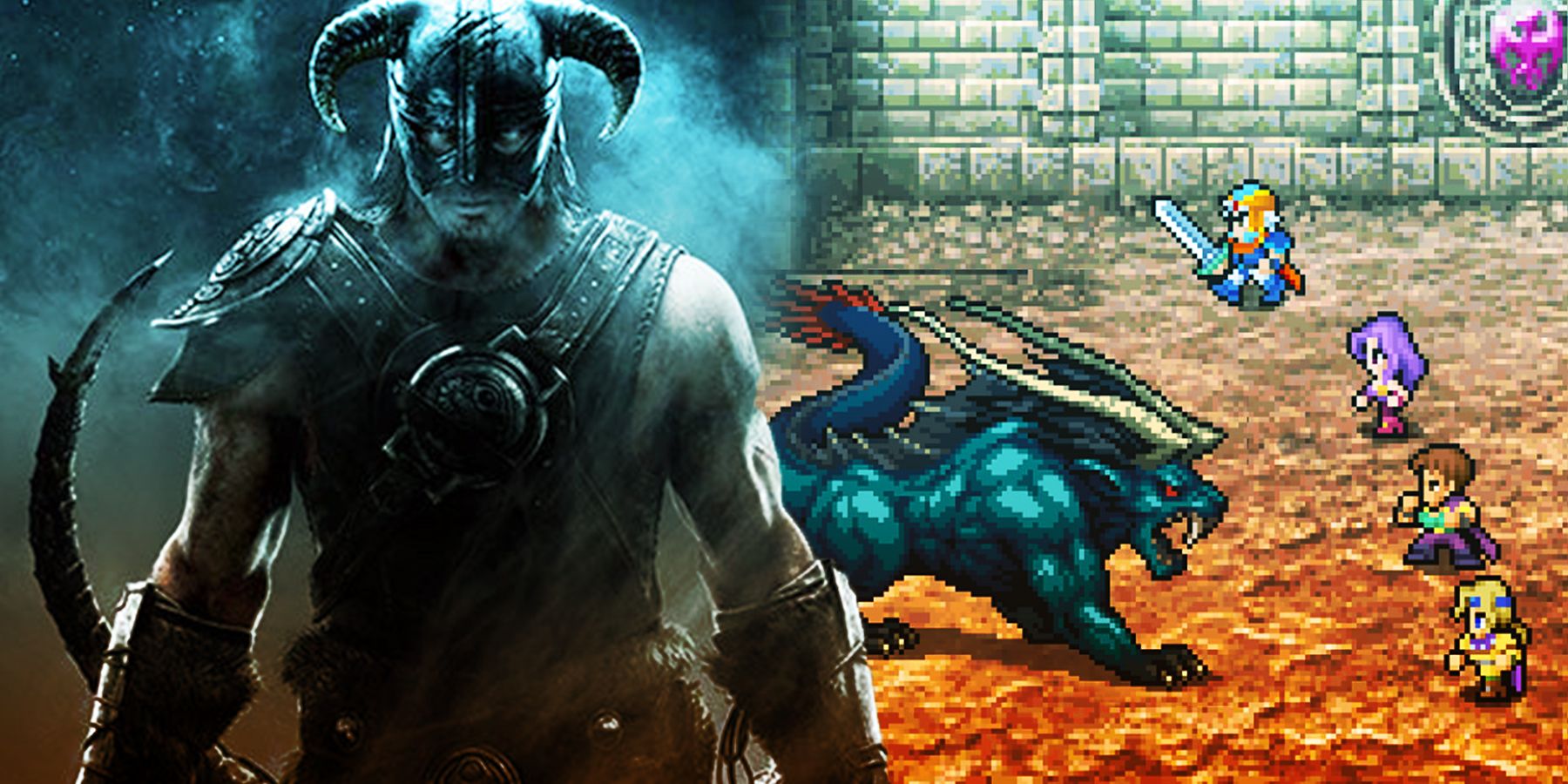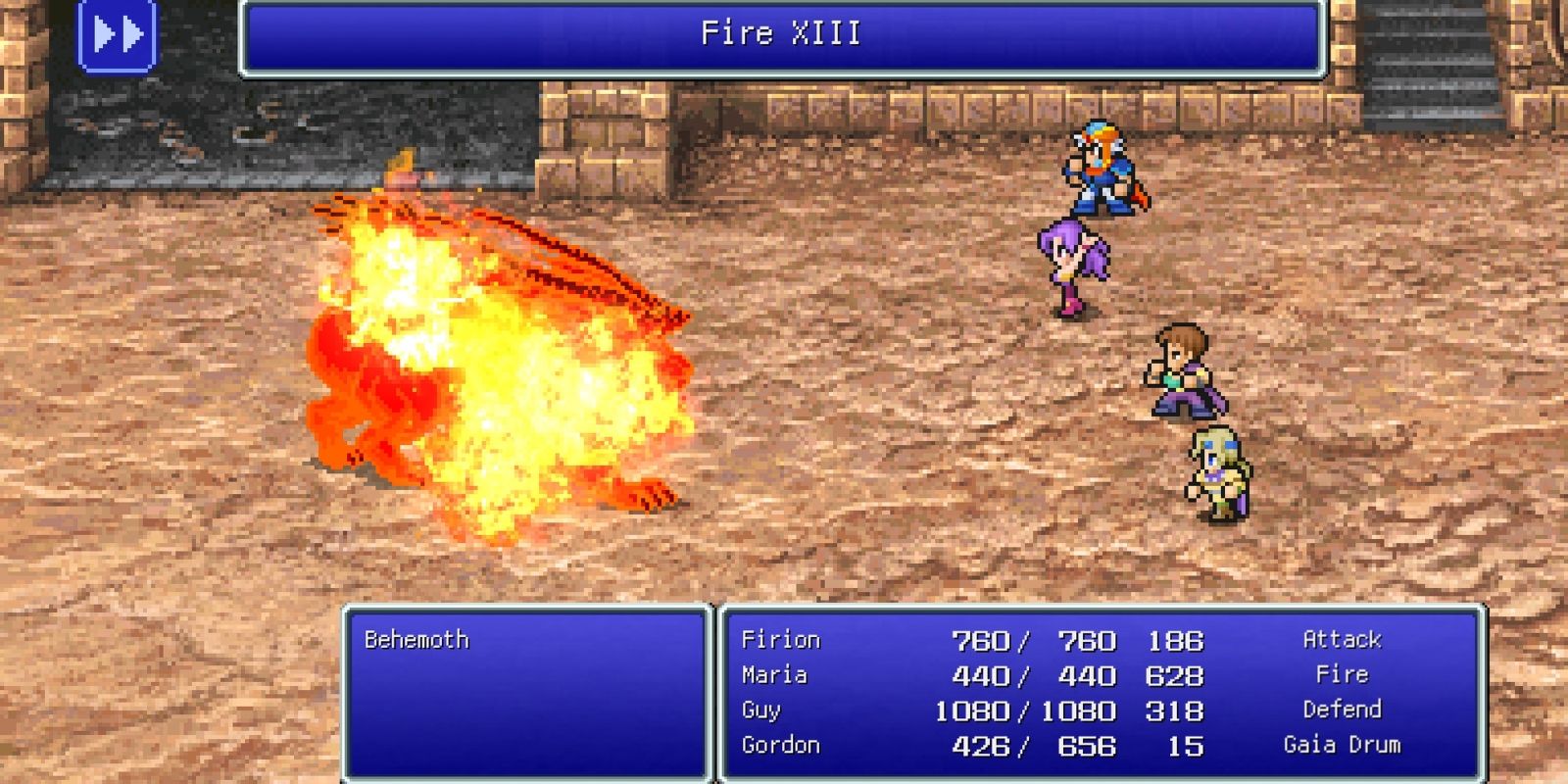To say that Skyrim is a touchstone in modern gaming would be a grave understatement. It's impossible to measure the impact the game had on the collective consciousness of gaming spawning memes and mods of all styles. One feature that many of the Bethesda games have is an attribute system, wherein the more the gamer uses a specific skill or weapon, the more proficient the character becomes with said skill or weapon.
Bethesda, however, was not the first developer to come up with this mechanic. In fact, it was one of the more contentious aspects of Final Fantasy II thirty-five years ago. With Final Fantasy: Pixel Remaster gracing shelves now, modern gamers will be able to see how far ahead of its time this game truly was and how it affected the beloved modern classics of today.
Making the Old New Again Is the Name of The Game
Final Fantasy II is an odd entry in the classic series. At this time, most RPGs took their leveling systems straight from tabletop gaming and applied them as such. A character gained a level and everything that worked in concert with it grew in effectiveness as well. So, a fighter would normally gain more strength, a thief would gain more dexterity, and so on. However, Final Fantasy II, despite only being the second entry into the franchise, got a lot more experimental by introducing the Attribute system.
Much like Skyrim, gamers were able to increase the effectiveness of their characters by repeatedly using specific tools. Each of the party characters starts with stats that work well in the beginning, but the player is always allowed to change those specialties. If the player wants to turn Firion from a straight sword-and-board character into one that dual-wielded, for example, all they would have to do is change out his equipment and spend some time grinding attribute points to push his leveling in that direction. For the most part, Final Fantasy II eliminated levels altogether, allowing the player an incredible amount of freedom with regard to party customization. At the time, this was pretty much unheard of and was actually quite confusing to players of the first game, who were more used to the previous leveling systems.
The Attribute system would be quickly abandoned in response to the fact that it could be a bit messy and unclear if the player isn't willing to experiment with it, or alternatively, tries to experiment a little too much. It also caused a bit of pain in increasing health, as it required characters to take damage in order to do so. This would lay the foundation for the beloved Job system that later Final Fantasy games would employ.
The Elder Scrolls Games Took the Attribute System and Polished It
The beauty of the Attribute system truly was its flexibility. However, it was incredibly unpolished in Final Fantasy II, leading to confusion and quite a bit of grinding to make anything useful out of it. Skyrim and the other entries into the Elder Scrolls franchise perfected the formula by making it feel more natural. It makes sense that a lone warrior could be learning all of these skills from the ground up. It ultimately adds to the immersion of the game, giving the player a grand sense of purpose and wonder as they discover the limits of their power. Skyrim has the advantage of making grinding more engaging.
It can't be overstated how ahead of its time Final Fantasy II's system actually was. It was the first of its kind for video games, but it would take Elder Scrolls, and particularly Skyrim, to make such a wildly experimental system palatable for gamers.



